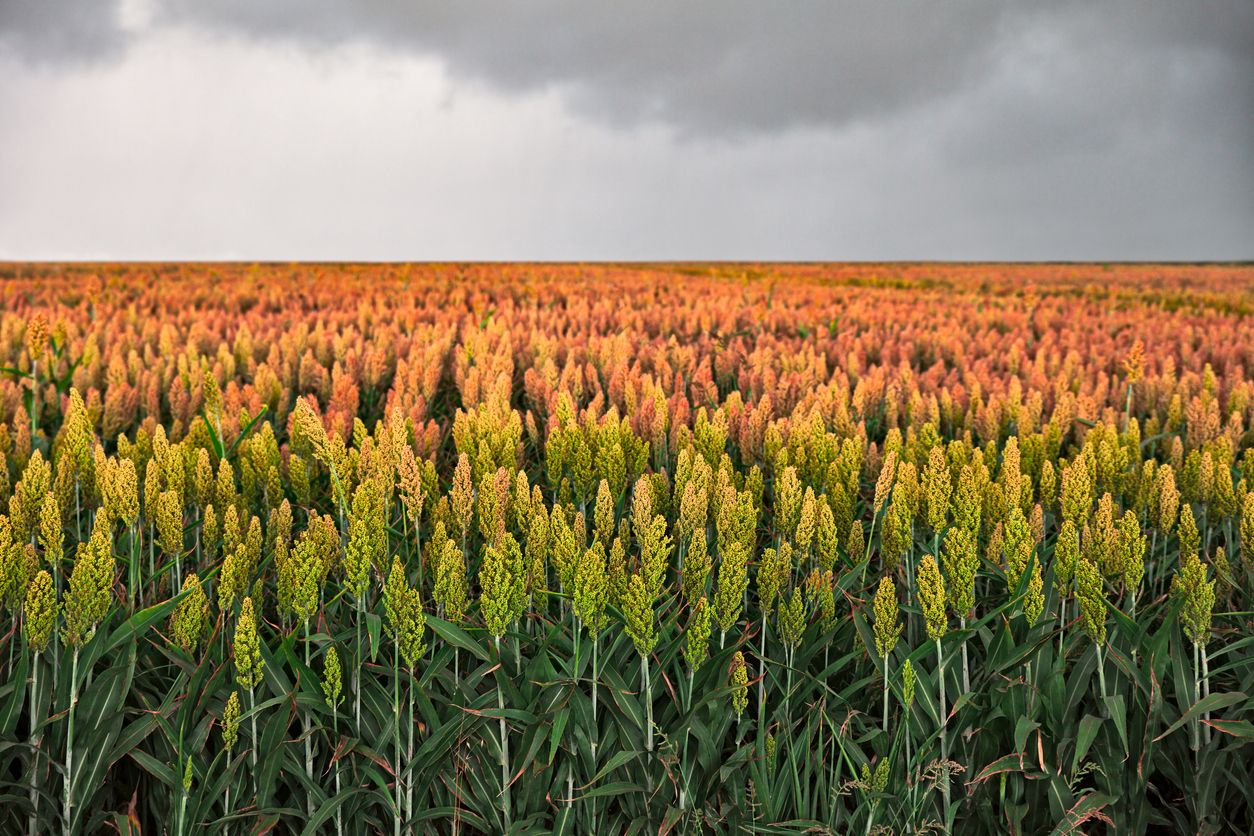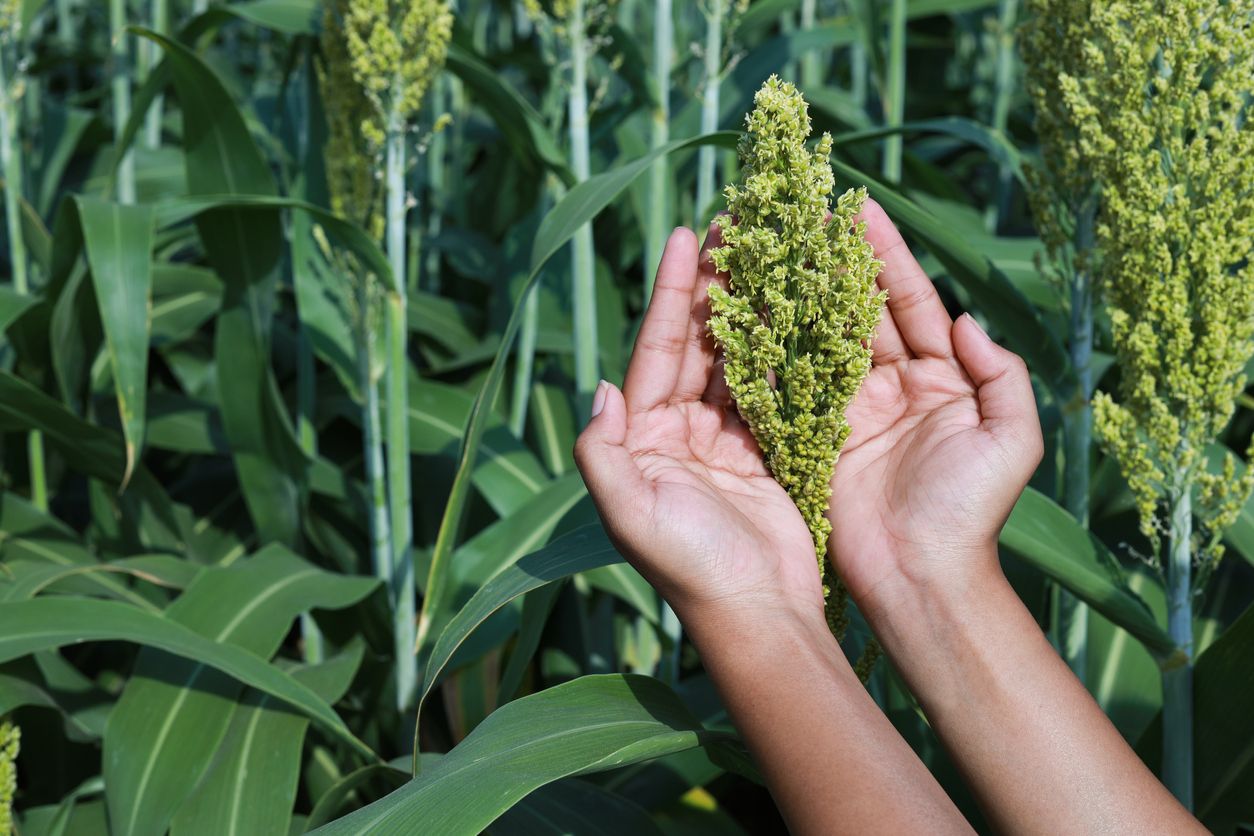Editor’s note: Nate Blum is the CEO of BlüMilo and Sorghum United. The latter is an international NGO advancing education and markets development for sorghum and adjacent small grains. He is an expert on grain sorghum production and marketing, with a focus on value-added agriculture processing for sorghum-based products.
It’s 2050. The world’s population has swelled to 10 billion people, with over 2 billion undernourished. Climate change has intensified: searing heatwaves and devastating floods batter breadbaskets like the U.S. Midwest and North China Plain year after year, decimating harvests of thirsty crops like maize and wheat. Meanwhile, fresh water resources are perilously depleted in agricultural regions from the High Plains Aquifer to the North China Plain. In this dystopian future, food and water crises spark conflict and migration on an unprecedented scale.
But what if such a dire fate could be avoided? What if the seeds of a more sustainable, food-secure future had been planted back in 2023?

For too long, policymakers, researchers, and supply chains have prioritized commodity crops that guzzle water and degrade soils, leaving farmers vulnerable to climate shocks and malnutrition endemic. But alternatives exist. Sorghum, millets, and other ancient, hardy grains can cost-effectively quench the world’s demand for food and nutrition while enhancing farmer livelihoods and preserving our planet’s life-support systems.
Sorghum United, a global network of stakeholders for the sorghum and millet industries, aims to educate the world about these supergrains. Developed over millennia by indigenous cultures like those in Africa, India and China, supergrains can thrive in hot, arid lands with marginal soils.
Beyond climate resilience, sorghum and millets offer crucial nutrition absent from rice and wheat, including iron, zinc and calcium. As climate change disrupts harvests in coming decades, sorghum and millets must become the foundation for food security and nutrition among vulnerable populations.
This requires surmounting real obstacles that have limited the adoption of these ancient grains. Outdated policies and underinvestment in sorghum/millet farming systems have stunted these crops’ production worldwide. Erratic value chains and low consumer awareness also inhibit markets. Overcoming these challenges demands integrated initiatives across research, policy, marketing and enterprise development.

The untapped potential of ancient grains
Human civilization was built on hardy cereal crops that sustained communities for millennia in the planet’s arid and semi-arid regions – namely sorghum and millets.
Sorghum originated in sub-Saharan Africa, while millets like pearl millet and finger millet emerged in the Sahel in Africa as well as in India. For generations, these grains reliably nourished families and sustained livelihoods in hot, dry environments too extreme for most other crops. They became staples across societies in Africa, China, India and the Middle East.
But starting in the mid-20th century, policy biases and research priorities shifted strongly toward rice, wheat and maize. Today, over 50% of all calories from cereals come from just these three commodities.
This obsession with a few thirsty, input-intensive grains has put our food system in peril. Groundwater resources are being rapidly depleted in breadbaskets like the North China Plain, Punjab Region, and High Plains to irrigate water-guzzling rice and wheat. Intensive use of fertilizers and pesticides for mono-cropped maize, rice and wheat degrades soils and ecosystems. And these commodity crops are highly vulnerable to heat waves, droughts and floods. And with climate change, such extreme weather is intensifying across the globe’s croplands.
In contrast, sorghum and millets thrive with minimal water, fertilizer and pesticides. Having co-evolved with harsh growing conditions, they tolerate scorching heat, prolonged drought and water-logging that would decimate conventional grains. As the foundation of subsistence agriculture in marginal lands across Africa and Asia, these hardy cereals have enabled food security for traditional farming communities lacking access to irrigation and agrochemical inputs. But their benefits don’t end there.
Compared to mainstream cereals, sorghum and millets also deliver superior nutrition, including higher levels of iron, zinc and calcium along with protein and fiber. This potent nutritional profile makes them ideal for combating malnutrition. They also have multiple uses beyond direct human consumption, providing nutritious livestock feed and raw material for industries ranging from breweries to renewable fuels. Additionally, their deep root systems enhance soil health and water retention compared to shallow-rooted cereals. These multifunctional benefits point to the enormous potential of sorghum and millets to sustainably transform food systems.

Barriers to unlocking the potential of ancient grains
If sorghum and millets have so much potential, why have they remained relatively niche crops confined to arid regions?
Key barriers include policy biases favoring water-intensive rice, wheat and maize; insufficient research on improving productivity and resilience of sorghum/millets; fragmented value chains and thin markets; negative perceptions as “poor people’s crops”; and trade policies inhibiting global diffusion.
These obstacles have caused sorghum and millets to languish as underutilized crops. But the climate crisis means we urgently need to harness the hardiness and nutrition of these grains. With smart initiatives across research, policy reform, value chain development and marketing, groups like Sorghum United can drive widespread adoption of sorghum and millets to build sustainable food security.
The time to act is now
The next 30 years will determine the fate of global food security and environmental sustainability. With its people-centered approach, Sorghum United aims to tip the scales toward a just, resilient future. But we cannot achieve this alone.
Realizing the vast potential of ancient grains to sustainably nourish billions will require collective action across sectors. Scientists must develop open-access, farmer-centered R&D on hardy cereals. Policymakers need to reform biased policies that hinder adoption of climate-resilient crops. Businesses must build inclusive value chains and food innovations enabling ancient grains to compete with rice and wheat. And civil society groups must advocate for fundamental food system changes that empower marginalized smallholder farmers.
At Sorghum United, we seek to unite these efforts through a shared vision of nourishing the world with time-tested, climate-smart grains. The solutions lie before us, in fields sown with sturdy sorghum stalks rustling in the wind, and small millet plots glowing gold under the summer sun. To feed 10 billion people while cooling the planet, we must re-discover the future in ancient wisdom. The time to plant those fields is now.



